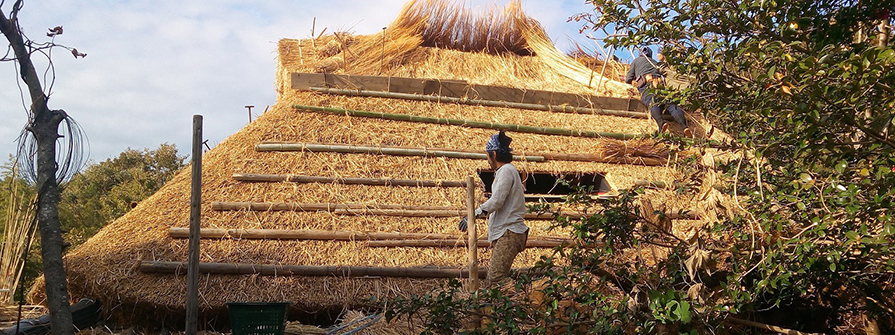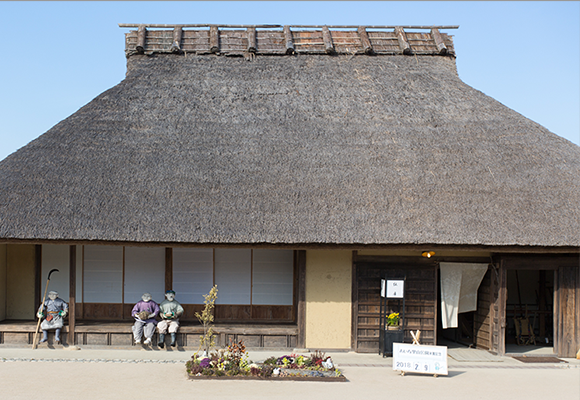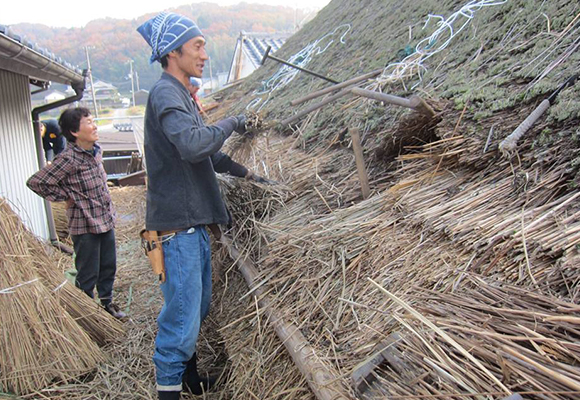The appeal of Kayabuki Minka(thatched roof houses)

Kobe Kayabuki Minka(thatched roof houses)

What is are kayabuki minka
(thatched roof houses)?
A kayabuki minka(thatched roof houses) is a private house with a thatched roof made of “kaya”. Kaya is a material for the thatch is made by cutting and bundling japanese silver grass and reeds together.
Depending on the plant used for the thatch, it can be called warabuki(straw thatch) or kusabuki(grass thatch), but all fall under the kayabuki category.
Thatched roofs are made of japanese silver grass, reeds, rice straws, wheat straw, etc., all of which are readily available. The roof material needs to be replaced periodically, the old thatch was often used as fertilizer for the plants that would become the future thatch materials – an organic method of maintaining the thatched roofs.

It is believed that development has led to a decrease in places to harvest the materials for thatching. Since kamadoes(cooking stoves) are no longer used, smoke is no longer being produced, and the roof rots and decays.
Covering the roof with metal sheets eliminates the need to obtain thatch for replacing or worry about rain leakage.
For these reasons, metal roofing has been on the rise since the Showa period(1926-1989). However, even with metal roofing, the traditional houses retain the thatched roof structure.

Kobe’s Kayabuki Minka
(thatched roof houses)
Approximately 800 thatched roof houses remain in Kobe, which are primarily found in the Kita and Nishi Wards, and range in age from before the Edo period(before 17th century) to the early Showa period(early 20th century).
For example, the Hakogi Family Residence in Yamada-cho, Kita Ward, is thought to be the oldest house Japan. It was built somewhere between late Kamakura period and early Muromachi period(14th century), and is designated as a national important cultural property.
In Suzurandai, the Uchida Family Residence, which was built in the mid-Edo period(18th century) as a headman’s house, remains and is now used for regular events and presentations.

Traditional thatched roof houses remain a part of our daily lives, and continue to be loved to this day.
Many people in Kobe, including government officials, kayabuki craftsmen, property owners, and organizations are working to preserve and utilize the local kayabuki landscape.
